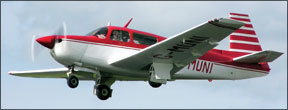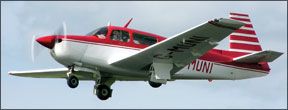After some 3000 hours of flight time-not including military flight experience-gathered over a 50-year period, I recently had occasion to fly into the Portland (Ore.) International Airport (PDX) several times over a short time span. The Mooney 201 I bought new in 1989 was my chosen aircraft. At the time, PDX was undergoing major runway renovations, with Runways 10L/28R closed for all 288 operations and 21 closed to landings. On an earlier flight, I was directed onto the right downwind for Runway 3 and to start my descent from 2000 feet after crossing over the tower. Even with idle power, full flaps and gear down, it takes a little while to slow down a Mooney and descend. On that flight, I extended my downwind past the end of the runway before turning base. All worked well. This week, I was offered a similar scenario but no instructions on altitude, so I presumed the same procedure and crossed the tower at 2000 feet before starting a descent with gear down and approach flaps. As I crossed the tower, I was instructed to expect a short approach, start my base turn and exit at taxiway Mike, 1500 to 2000 feet beyond the 6000-foot runways threshold. I was skeptical as to the outcome. Slipping did not solve the problem, so I went around, which worked well except I passed much closer to the construction crew at the end of Runway 3 than I was comfortable. Some of the key lessons here include: Tower operators at large commercial airports do not know the performance and limitations of personal airplanes. Theyll ask you to do things neither safe nor practicable. Also, just because the tower asks you to do something, blindly following their directions isnt necessarily a good thing. If you cant clarify their intentions, use your own judgment to extricate yourself from the situation and keep flying the airplane. Then ask. Finally, dont just hope you have enough room to get stopped before you go off the end of the runway. If there is any question at all, go around while you still have time. -Charles J. DAmbrosia




